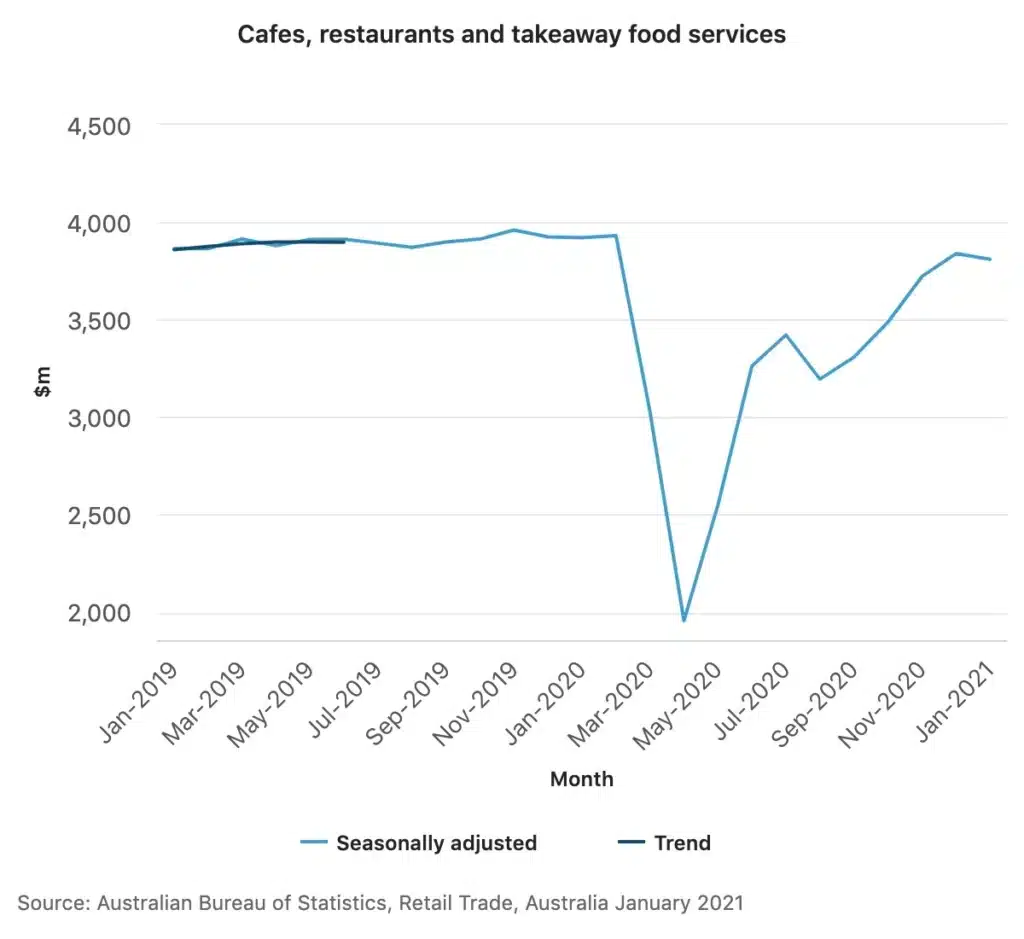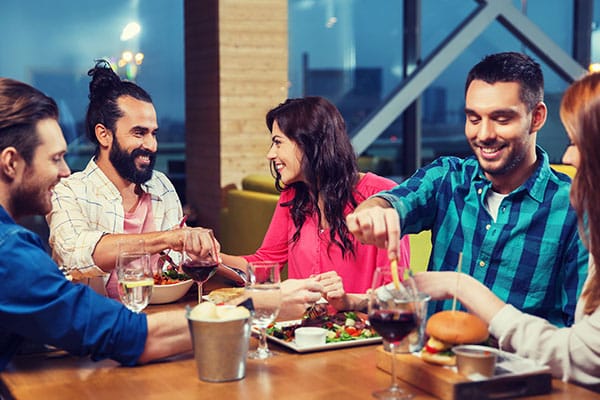2020 was a disastrous year for the restaurant industry. One in four jobs lost during the pandemic were from the restaurant industry—more than any other sector of the economy. Hundreds of thousands of bars and restaurants were permanently shuttered. The server whose warm welcome would improve a lousy day or the chef who knew exactly how much seasoning to put in your stew are both doing deliveries for an online store. Restaurants have historically been known to be creative and resilient. They have survived through wars, recessions, political unrest, and much else. And yet, despite all efforts, a huge percentage of operating restaurants perished last year.
Consumer sentiment doesn’t present a rosier story either. According to a recent McKinsey survey, over half of U.S. consumers don’t expect their routines to return any time soon. Consumer spending on discretionary activities has steadily declined over the past few months and net intent is also trending down. Brand loyalty has been abandoned. Three out of four American consumers have tried new shopping behavior (e.g., food delivery services), and most intend to continue the new behavior even after COVID-19 subsides. Four out of ten consumers believe their finances will not return to normal until the latter half of 2021 and are being more mindful of how they spend their money.
So is the restaurant industry moving towards extinction?
Not at all. The situation for the industry will turn around much faster than conventional wisdom thinks. Despite COVID-19, new restaurants continued to open last year at a relatively fast pace and picked up pace in the fourth quarter, according to data compiled by Yelp.
Early indications—from China, Australia, and other countries where the pandemic is somewhat under control—suggest that consumer demand rebounds when restrictions are lifted. China has almost no local transmission of the virus and has experienced a fast economic rebound over the past two quarters. New restaurant activity started among people living in export-oriented coastal provinces but has now resumed even in places like Wuhan, the central Chinese city where the new coronavirus first emerged.
“You’ve had to line up to get into many restaurants in Wuhan, and for Wuhan restaurants that are popular on the internet, the wait is two or three hours,”
said Lei Yanqiu, a Wuhan resident in her early 30s.

Cafes, restaurants and takeaway food services have bounced back to pre-COVID levels in Australia.
American restaurant owners have shown a level of creativity and resilience that is not seen in any other sector of the economy. The industry has banded together to push the Restaurants Act through Congress. Chefs are volunteering to feed communities in need while also looking to the future. Restaurants that plan ahead to adapt and refine their restaurant model for the “next normal” are likely to be better positioned to bring sales back to pre-crisis levels.
There is significant pent up demand that is likely to surface with increase in consumer confidence due to expanded vaccination. Many people are ordering food online today because they have no alternative. When restaurants reopen, guests will most definitely return and in hordes. The rebound is likely to be stronger and faster than what many analysts are predicting. Chain restaurants will be the immediate winners, with old customers flocking back and new ones excited to try something new. Fancier restaurants driven more by expense accounts will take a while longer to bounce back.
Experience from past economic slumps shows that predictions of the “death of dining” have always proven wrong. Empty storefronts and large spaces cannot go empty for long. When the pandemic is no longer the scary monster it was in 2020 and life returns to a new normal this spring, people will do what they have always done for pleasure. They will go out to eat, sit at their favorite table, and have a great time with friends and loved ones. The question is, when the hordes come in, will you be ready to feast them or will you be watching from the sidelines? The choice is yours.
About the Author

Rajat founded Presto in 2008 while pursuing his doctorate at MIT. He has also cofounded Zimride (now Lyft), the popular ride-sharing company. A widely acknowledged expert in hospitality technology, Rajat is regularly featured in television interviews and media articles.
Contact mktg@presto.com to schedule a media interview or analyst briefing with him.



